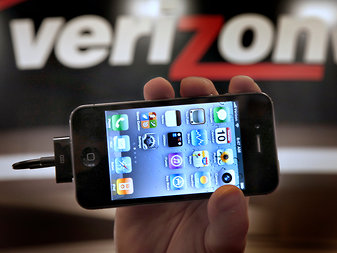The world’s biggest maker of semiconductors, which grew by supplying chips to most of the world’s personal computer makers, is now facing an erosion of that market. According to Gartner, a market analysis firm, PC shipments worldwide declined 3.5 percent in 2012.
The result was evident Thursday in Intel’s fourth-quarter earnings report. The company, which is based in Santa Clara, Calif., reported net income of $2.5 billion, or 48 cents a share, down 27 percent from $3.4 billion, or 64 cents a share, a year earlier. Revenue fell 3 percent to $13.5 billion from $13.9 billion.
“The PC business as we’ve known it is evolving,” said Paul S. Otellini, Intel’s chief executive, in a call to analysts. “The form factors are going to blur here.”
Instead of PCs, more people and businesses are buying smartphones and tablets. Intel gets 64 percent of its revenues and some of its highest profit margins from chips for PCs. It has scrambled to revive the market, while it aggressively tries to supply tablet and smartphone makers, so far with little success.
But even as it gets harder to sell PCs, Intel appears to have managed its business better than many investors thought possible. Revenue was in line with analysts’ expectations, according to a survey by Thomson Reuters, but net income was higher than the 45 cents a share that the analysts were expecting, on average.
Intel projected lower revenue and pressure on its profit margins for 2013, however, which sent its shares down about 5 percent in after-hours trading. Intel shares finished regular trading at $22.68, up 57 cents.
At the after-hours price, Intel’s market capitalization dropped below that of Qualcomm — a smaller maker of chips, but a company that makes chips for smartphones and tablets. Even a year ago, this would have been unthinkable.
Over the last six months, shares of Intel have fallen about 18 percent, while Qualcomm’s stock is up almost 20 percent. ARM Holdings, which sells designs for low-power chips popular in mobile devices, is up almost 90 percent in that time.
“Longer term, Intel will move more aggressively into smartphones,” said Bobby Burleson, an analyst with Canaccord Genuity. “But everyone worries about their long-term gross margins.”
Intel, which employs an engineering-focused staff of 105,000 people, plans to continue to invest heavily in research and development, as well as new manufacturing facilities. Intel operates on the principle that making the biggest volumes of the most advanced chips gives it a quality and profit margin advantage.
Despite the lower earnings, Intel said it would spend $18.9 billion on research and development, along with marketing and administrative costs, in 2013. Two years ago Intel spent $16 billion on those things, increasing that amount to $18.2 billion last year.
“Our manufacturing leadership becomes increasingly valuable,” said Stacy J. Smith, Intel’s chief financial officer. “People expect Intel to make more powerful, more efficient devices. That applies across all our businesses.”
That works, as long as the chips have buyers. Last year Intel hoped two PC industry initiatives would woo buyers back to PCs, but neither did. One, backed by a large investment from Intel, was in lightweight ultrabook laptop computers, many of which had tablet features, like touch screens. These came to market later than analysts had expected, at prices most consumers did not find attractive.
The other, Microsoft’s release of its Windows 8 operating system, has so far failed to excite buyers. Consumers and businesses did not buy new computers in order to use the upgraded system.
Mr. Otellini remained upbeat about ultrabooks, saying that there were now 140 types of the lightweight laptops on the market. The number of styles and different ways they use things like keyboards and touch screens, he said, would make it harder to tell a PC from a tablet.
“We’re in the midst of a radical transformation with the blurring of form factors,” he said, adding that this year Intel would introduce a new chip, called Haswell, which would help in the production of lightweight machines that have longer battery life. He said little about Windows 8.
Intel’s second-largest business, chips for computer servers in data centers, reflected an overall strength in that industry. Fourth-quarter sales to data centers was $2.8 billion, an increase of 4 percent from a year earlier.
Article source: http://www.nytimes.com/2013/01/18/technology/intel-earnings-are-sharply-lower.html?partner=rss&emc=rss
